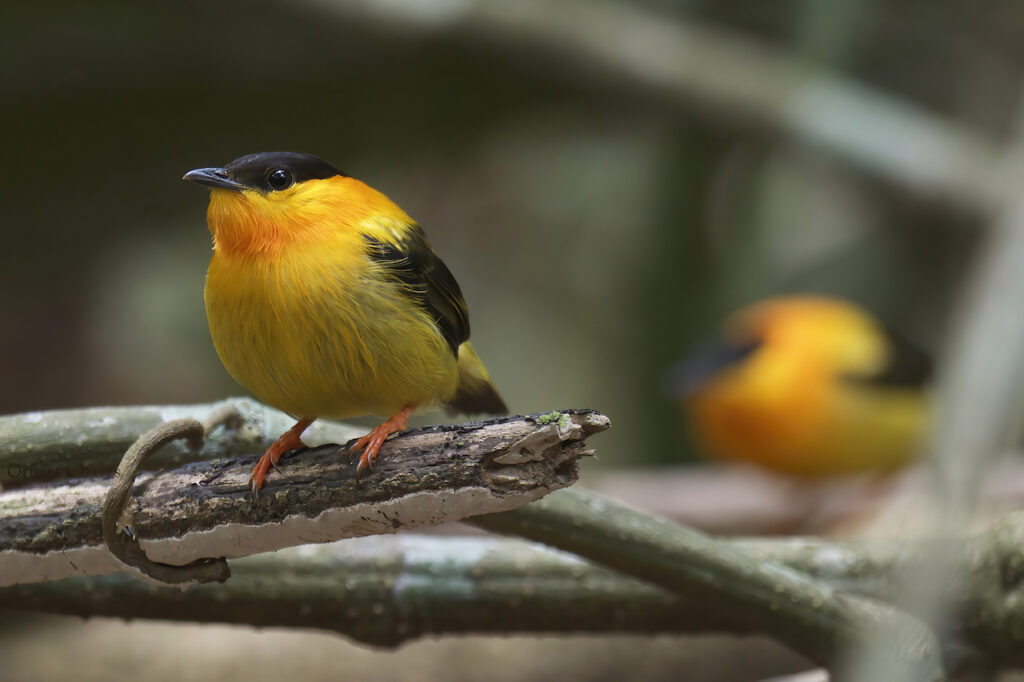In the realm of avian wonders, a diminutive, plump, and short-tailed bird emerges, transformed into a tiny bundle of vivid colors. With a brilliant orange back, a sunny yellow belly, and a contrasting black cap, the Orange-Collared Manakin (Manacus aurantiacus) stands as an emblem of nature’s artistic brilliance.

This enchanting bird, endemic to the lush landscapes of Costa Rica and western Panama, possesses an elegant compact form, featuring a robust hooked bill and eye-catching orange legs. Despite its small stature, averaging around 10 cm (4 inches) in length and weighing approximately 15.5 g, the male Orange-Collared Manakin commands attention with its striking appearance. Adorned with a black crown, wings, and tail, complemented by a captivating black band across its midback, the male’s head, neck, breast, and upper back are adorned in radiant orange. Its rump boasts a tranquil olive-green, while the abdomen dazzles in bright yellow. The male’s wings display unique modifications, with the outermost primaries narrow for their outer half and the inner primaries thickened and elegantly bowed. Such a feature is shared only with the male White-Collared Manakin.

Females and young males exhibit shared characteristics, boasting an olive-green hue with a cheerful yellow belly.
Endemic to the breeding grounds of Costa Rica and western Panama, the Orange-Collared Manakin finds solace in lowlands and foothills, gracing the Pacific slope up to 1100 meters. Within these realms, it thrives in semi-open moist forested areas, tall secondary growth, shaded plantations, and gardens. These dainty birds feed within the tree canopy, indulging in fruits while occasionally capturing insects.

During the breeding season, the female delicately lays two brown-speckled gray eggs within a shallow cup nest, often positioned 0.5-2.5 meters high in a horizontal tree fork. She takes charge of nest-building, diligently incubates the eggs for 18-21 days, and cares for the young. It’s noteworthy that manakins do not form stable pairs.

Though the Orange-Collared Manakin’s range is somewhat restricted, its presence remains fairly common. Nonetheless, its population trend hints at a slow decline due to habitat destruction—a reminder of the delicate balance between human development and the preservation of these remarkable species.




